Perhaps the definitive case of 'What Might Have Been' in cinema, the lifecycle of the Alien franchise immediately after 1986’s Aliens was as complex as that of its own xenomorphs. Ridley Scott and Renny Harlin were linked with Alien³ before a newbie filmmaker called David Fincher was parachuted in (without, it later transpired, a parachute), and a miscellany of writers worked across a variety of storylines, each of which would have taken the Alien mythology in a vastly different direction. Some were dazzlingly original and laden with metaphor and subtext; some more hidebound and derivative and involved aliens ransacking New York. The studio signing the cheques, 20th Century Fox, dismissed all of them before full-circling to the very ideas Dan O’Bannon and Ronald Shusett had spawned for Alien: a big old beastie picking off a cast one-by-one in a confined space. With Neill Blomkamp revealing concept art for his own secret Alien sequel, we’ve shifted through the, erm, Ashes to reassemble those alternative _Alien³_s and see where the franchise might have ended up.
The Marxist one
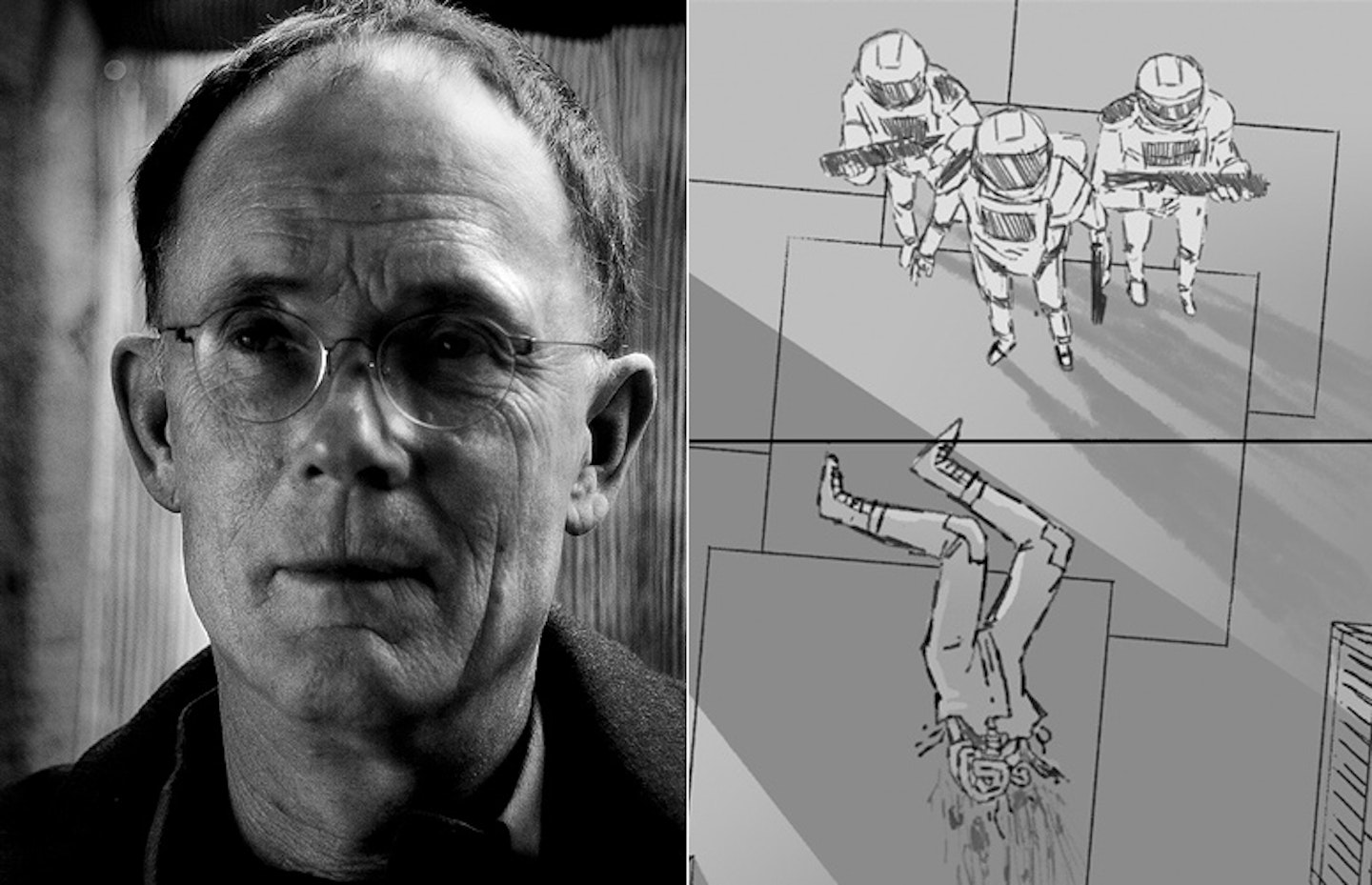
Cyberpunk prophet William ‘Neuromancer’ Gibson was the first writer hired by producers Walter ‘Warriors’ Hill and David Giler in 1987. His script, guided by a story idea from his Brandywine paymasters and bashed out, he half-joked, “in a backroom of Shepperton Studios” with a writers strike looming, picked up from Aliens with the Sulaco drifting off course and into the airspace of a Soviet-like colony called the Union of Progressive Peoples. If that all sounds like the precursor to endless Phantom Menace-style scenes of taxation policy and agrarian reform – Engels in orbit or Animal Spacefarm – the first draft was actually a surprisingly combat-heavy affair that involved an alien infection mutating the inhabitants of Anchorpoint Station into lethal xenohumans.
Gibson namechecked Andrei Tarkovsky, Solaris in particular, as a reference point but the meat of his threequel took a less philosophical tack, with Ripley in hypersleep (Sigourney Weaver was wavering over signing up again) while Michael Biehn’s Corporal Hicks and the equally battle-scarred Newt were trapped in a brutal crossfire. Hill and Giler, who’d given Gibson a 12-page outline to work from, bemoaned its lack of scope and invention. “That was probably our fault,” Giler later conceded. “It was our story.” Only the characters’ barcode tattoos made it as far as Fincher’s version. Click here to read the Gibson iteration in full.
The alien invasion one
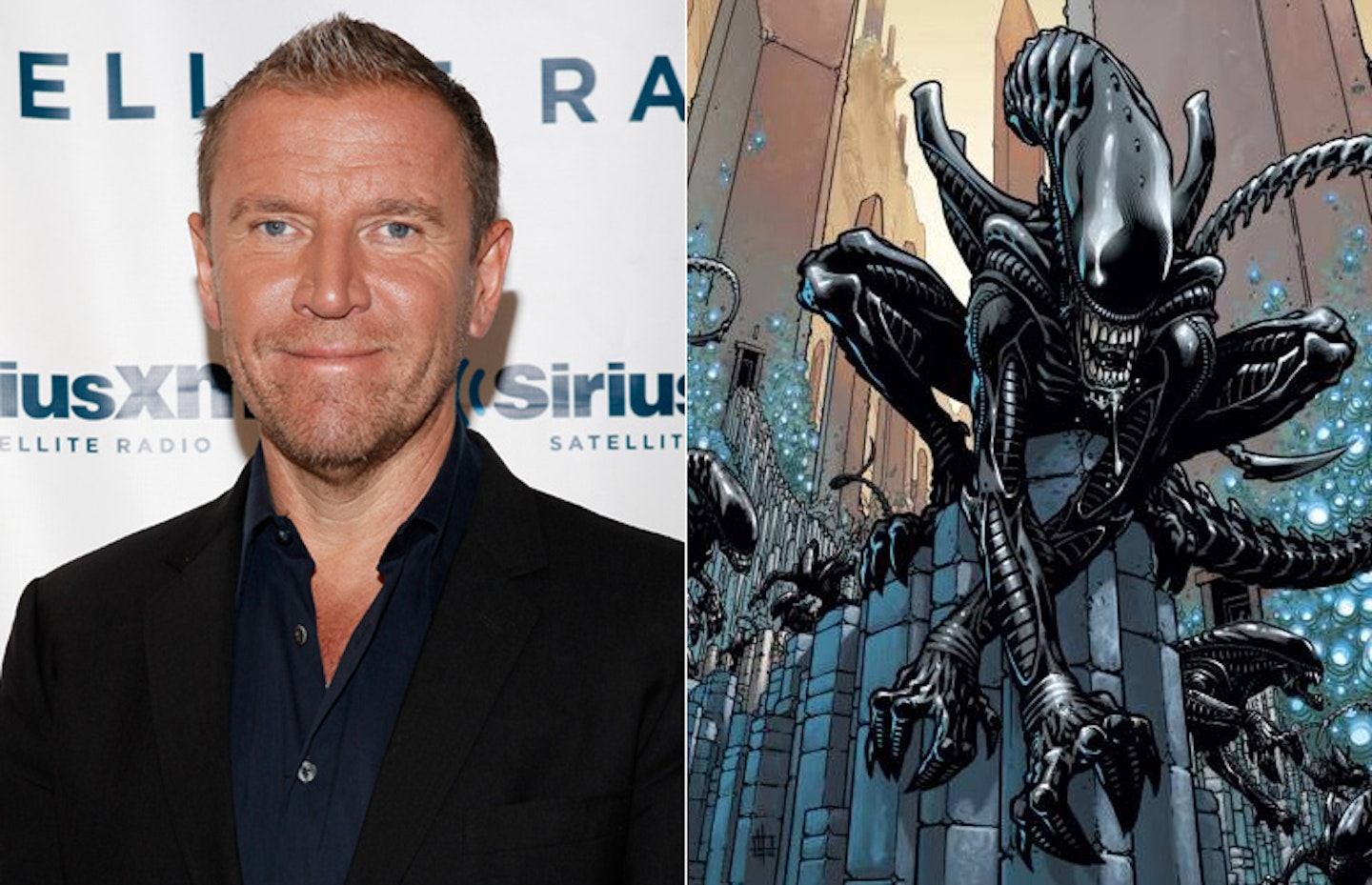
Renny Harlin’s successful Nightmare On Elm Street 4 teed him up for the next crack at the project. But while Hill and Giler were leaning towards another claustrophobic, budget-friendly setting, Harlin had very different ideas. “My first concept was we go to the planet where the aliens come from,” recalled the Finnish director, “with Ripley and a team of scientists and soldiers, and we find out what they really are”. The studio got as far as reading the bit about needing an entire alien planet before nixing it. Undeterred, Harlin then suggested shifting the film to Earth. That too was kiboshed. Harlin, a headstrong 29 year-old, remained unimpressed with the notion of a prison setting. “If you do Aliens in prison, it’s like, ‘Who cares about the prisoners? Let them die’,” was his verdict. Do not put this man in charge of a justice department.
The shitsville one
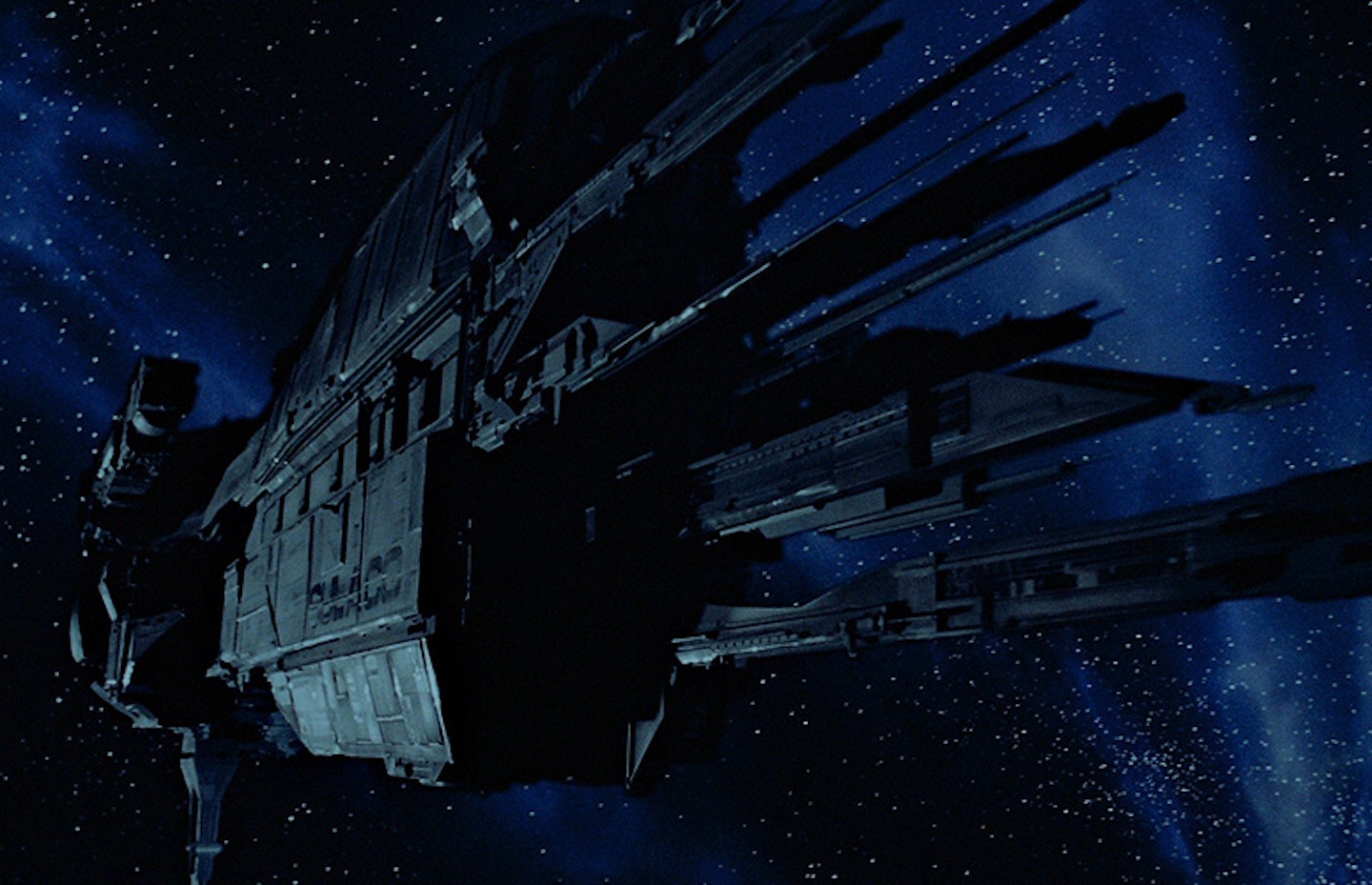
Next to report to Alien³ boneyard to have their soul crushed and their dreams extinguished was Near Dark and The Hitcher scribe Eric Red. His version was still designed for Harlin, who recommended him, and it shredded a lot of what came before to forge a story that was as much conspiracy thriller as sci-fi horror. Instead of Ripley and Hicks, Red’s hero was ‘Sam Smith’, a Special Forces trooper from a Kansas-like space colony/bio-dome unaffectionately known as ‘Shitsville’, who discovers that he was the sole survivor of a squad mauled by an alien when it boarded the Sulaco.
Again, there’s no Ripley in this version and even the writer himself was dismayed by the results. “I don’t even look at it as my script,” Red later recalled of his draft, delivered in February 1989 after less than two months’ frantic work. “The piece of junk was a product of a few weeks of intense, hysterical story conferences with the studio to rush to get the picture into production and it turned out completely awful.” Included in the self-professed awfulness is a new kind of xenomorphic spore, as well as alien cows, pigs and chickens. It was The Thing by way of Old MacDonald’s Farm. There is one particularly cinematic sequence where Smith revisits the fateful Sulaco boarding and subsequent assault on his team by way of a hologrammatic recording. But seriously, alien chickens?
The bio-warfare one
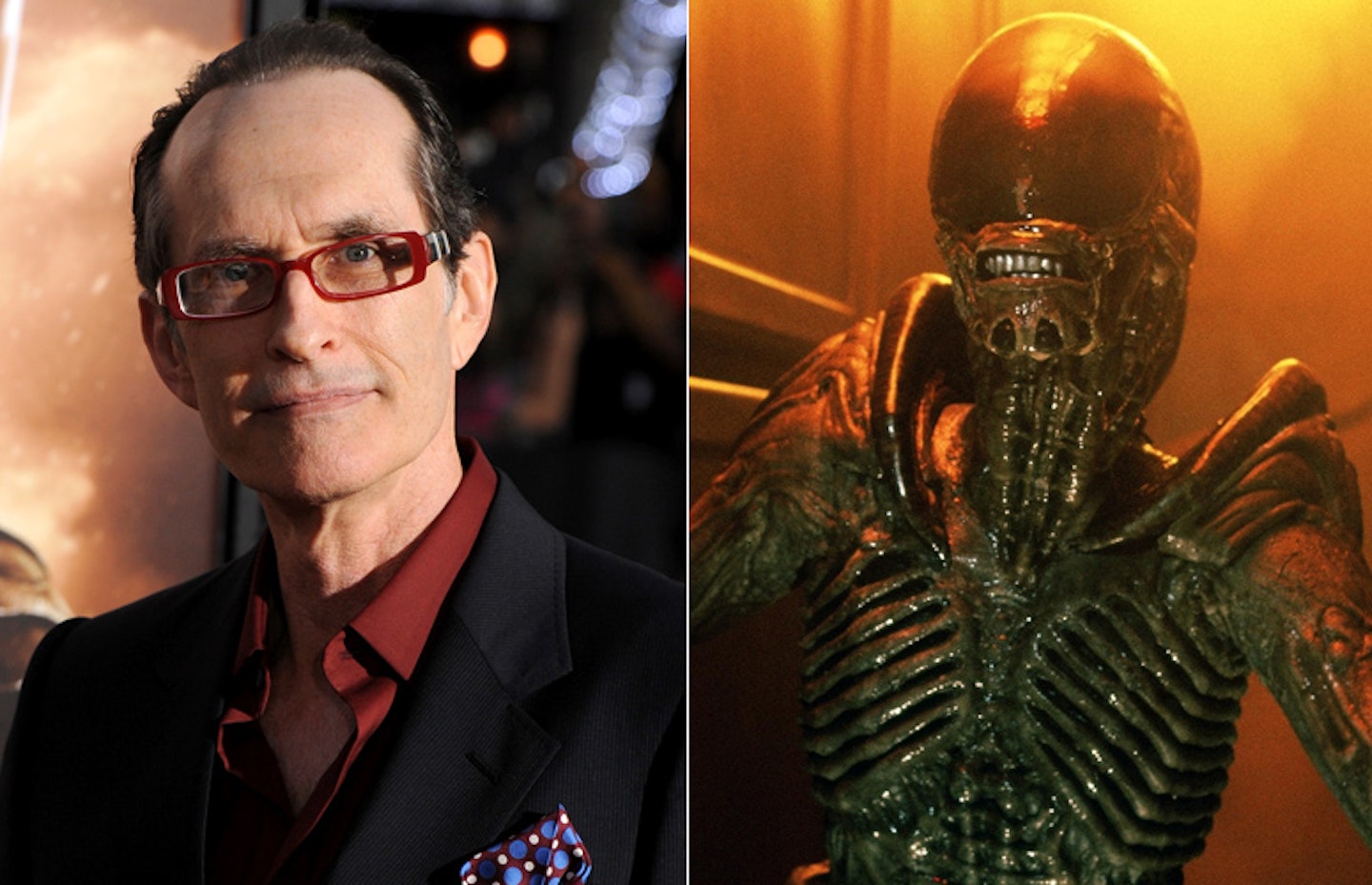
“We wouldn’t do a reheat of one and two.” That was the mantra Hill and Giler clung to as they tried to divine an Alien³ that dodged the pitfalls of formulaic filmmaking. They wanted fresh ideas. A new, more complex labyrinth to set their killer xenomorph loose in. A social order that would naturally twist and contort in interesting ways as the danger levels cranked up. Thus we return to the prison. The next writer charged with conceiving this was David Twohy, whose script for Harrison Ford thriller The Fugitive was, at the very least, a handy calling card for stories about people running away from things. He set the events of the threequel on an orbiting prison called Moloch Island, stripped it of Ripley, Newt and Hicks, and tethered it again to Weyland-Yutani’s foul scheming.
This time, the corporation – having stumbled upon a facehugger trapped, Jurassic Park-style, in amber on a mining expedition – unleashes the xenomorph on the prisoners in a series of Josef Mengele-style experiments. The heroes were a female medical orderly called Packard and Scott Styles, a con serving 10 years for fraud who’d offer the bare bones of another Twohy space outlaw, Pitch Black’s Riddick. When the writer discovered that his wasn’t the only Alien³ script in town – newly hired director Vincent Ward had a radically different idea for the project – he swiftly exited airlock left. The idea of a new breed of hybrid alien, spawned by Weyland-Yutani’s evil scientists, would resurface in a different guise in Alien: Resurrection.
The wooden one

Next into the Alien cauldron was filmmaker and artist Vincent Ward. The New Zealander had made a name for himself at Cannes with his medieval-meets-modern-life fable The Navigator: A Medieval Odyssey (think The Village jazzed up with Terry Gilliam-style surrealism) when 20th Century Fox hired him to pick up where Gibson, Harlin and co had left off. Ward’s ken for medieval world-building created the franchise’s most singular vision: a wood planet inhabited by superstitious space monks upon which the resurrected Ripley character would land. Short of hiring Werner Herzog, the studio had taken as big a gamble as it was possible to take with the storyline. It was as much Umberto Eco as Alien.
But producers Hill and Giler liked it and so, crucially, did Sigourney Weaver. “Very original and very arresting” was the actress’s verdict. Expensive, too. The prospect of funding an entire wooden cathedral had studios execs reaching for their Xanax. Ward’s creation would be 16 storeys high with each reaching 100 metres floor to ceiling. They’d need Leonardo Da Vinci as production designer. They got the next best thing: Empire Strikes Back’s Norman Reynolds. If anyone could construct an intergalactic deathtrap it was him. The story itself, in collaboration with Hill’s Another 48 Hours’ co-writer John Fasano, had monks worshipping the xenomorph, action sequences set in head-high wheatfields and a delirious Ripley impregnated with a xenobaby. But even as wooden sets were being built and assembled, Fox, pressured by Rupert Murdoch’s release date change, pulled the plug. You can delve into Ward’s vision with much more detail here.
The one with seven dwarves
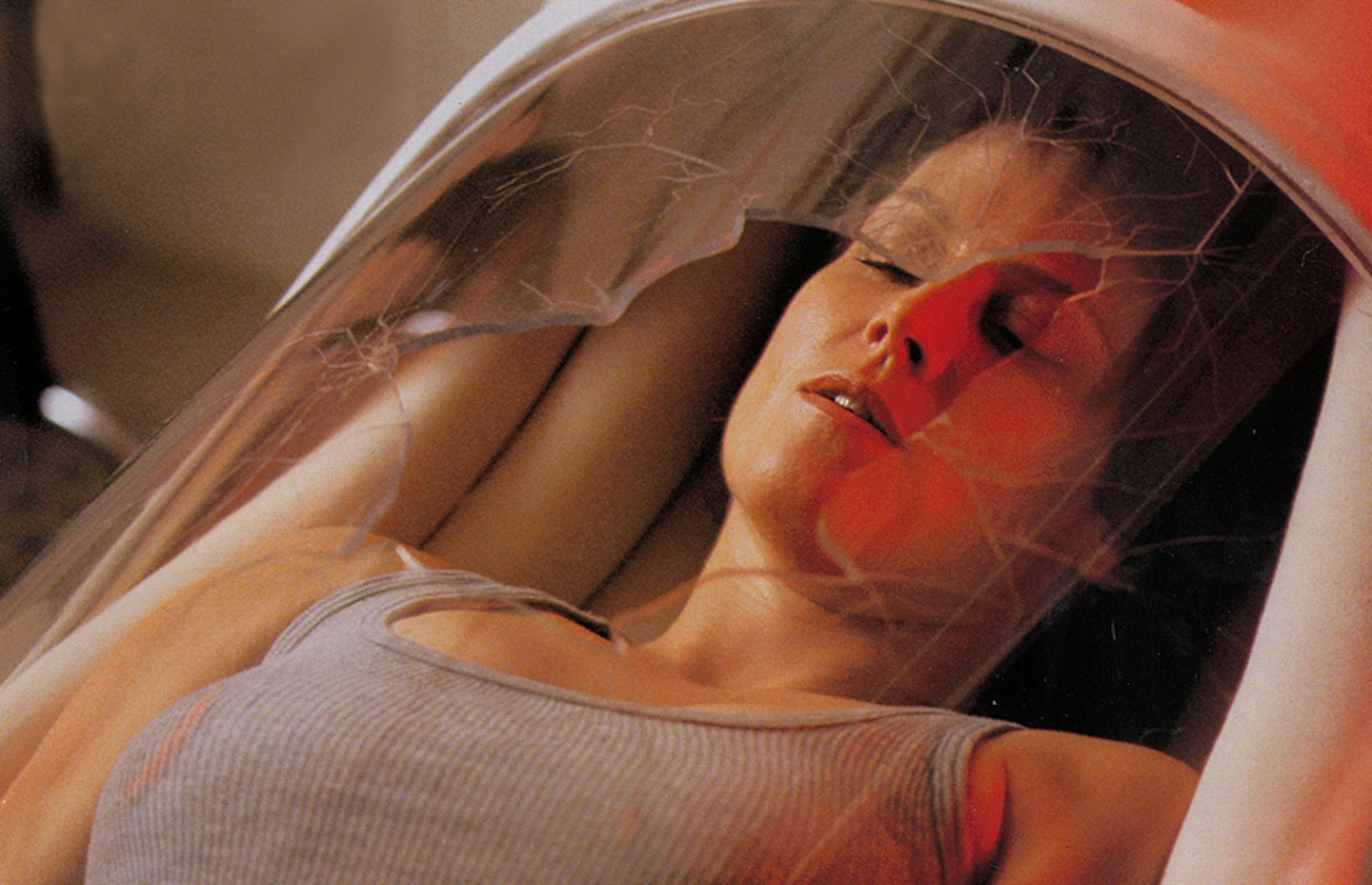
By mid-1990 Alien³’s production costs (and screenwriter bodycount) were mounting up, 20th Century Fox’s top brass had birthed enough kittens to populate the entire internet and Giler and Hill were desperate for something, anything, to show for their money and time. Working first on their own draft and then hiring screenwriter Larry Ferguson (Beverly Hills Cop II), Giler and Hill tried to beef up the Ward/Fasano script, sloughing off the Wooden Planet but retaining some of the spirituality of its monkish inhabitants.
Out went Ward, in came gifted music-video/commercials director David Fincher, whose often stormy dealings with his producers reached a nadir when Giler, referring to a Nike ad he’d made, dismissed him as “a shoe salesman” in a fiery conference call. Fincher’s views on Ferguson’s earlier draft are a matter of record. “[Ripley] was going to be this woman who had fallen from the stars,” he remembered dryly. “In the end, she dies and there are seven of the monks left, seven dwarfs. You can imagine what (Fox chief) Joe Roth said when he heard this. ‘What?! What are they doing over there? What the fuck is going on?’” Fincher reworked the script with novelist Rex Pickett, who came on board, first surreptitiously at Fincher’s behest, and then in an official capacity four weeks before shooting started with strict pointers to rework the second half of the Hill/Giler draft of December 1990. This draft woke Ellen Ripley from cryo-sleep when her escape capsule careered into a prison colony called Fiorina ‘Fury’ 161 (population 25, plus one angry alien) and excised an alien hive sequence conceived in the early draft. Pickett, himself, was swiftly cocooned by the producers, before Hill and Giler themselves added one final draft to the pile even as the film finally went into production.
The comic book one
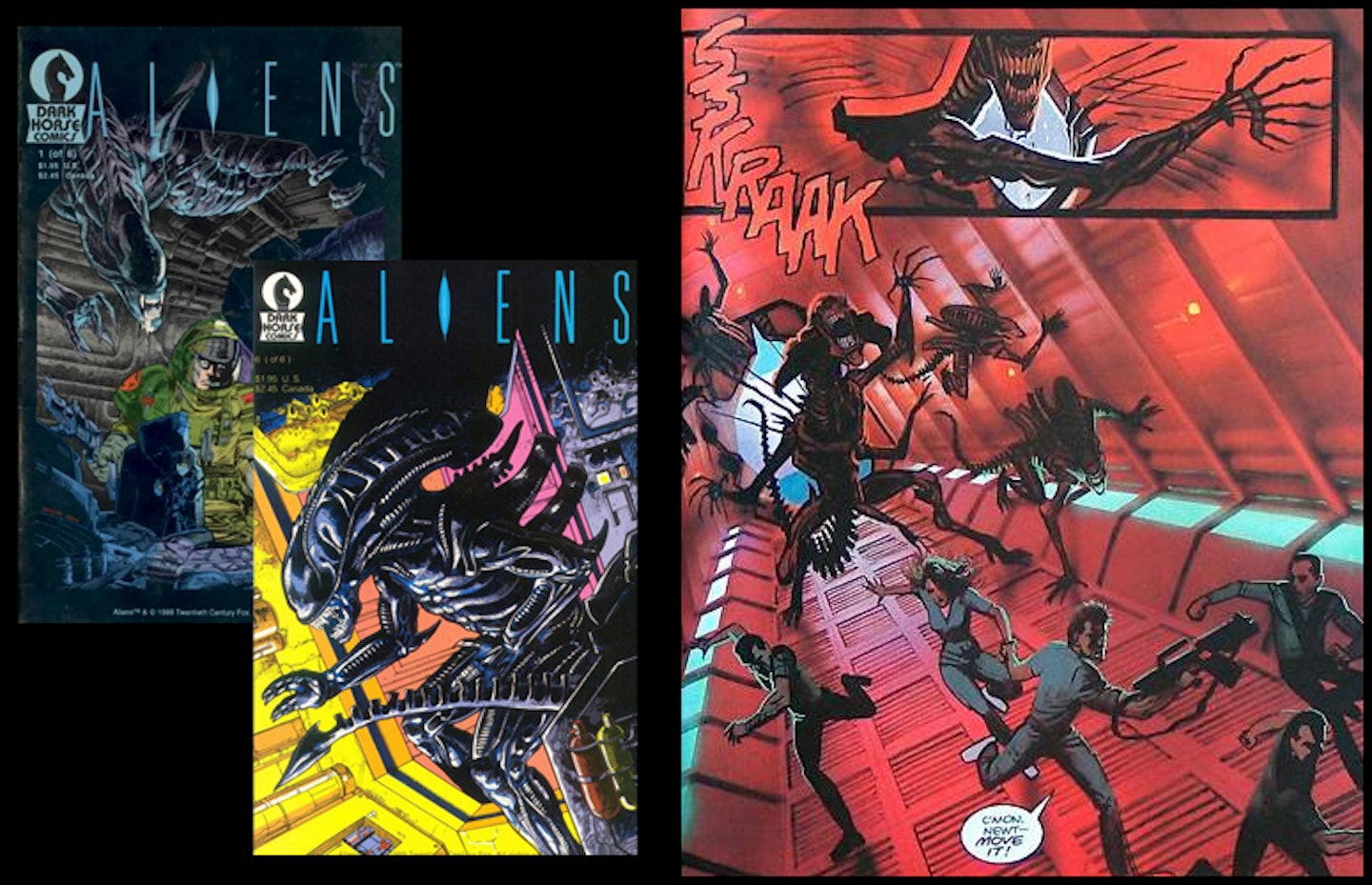
Another interesting footnote to the tale is offered by Milwaukie’s Dark Horse, the comic stable behind Frank Miller’s Sin City and 300. Around the time Alien³ was grinding slowly towards the screen, Dark Horse put out three Alien books that picked up where Aliens had left off. Ripley was set aside, the focus falling instead on Newt and Hicks – renamed Billie and Wilks in recent reprints – but there’s still some crossover with the final Fincher movie. Book one – ‘Outbreak’ – features a cult that worships the xenomorph as a god, a little like Paul McGann’s pious outcast Golic in the film. Books two and three (‘Nightmare Asylum’ and ‘Female War*’, in which Ripley showed up again) tapped into the corporate phobia that underpins the movies. The suits at Weyland-Yutani, it seems, are the same kind of bastards whether in print or on screen, albeit here it’s just known as ‘The Company’. Hicks – sorry, Wilks – sports the kind of acid-scarred phizog even Darkman would wince at and a much meaner disposition than in Aliens. Space Jockeys, sporting elephant-like trunks, also pop up: initially seeming to be humanity's allies against the Xenomorphs, before revealing an agenda to colonise Earth themselves. Our enemy’s enemy turned out not to be our friend after all. Ridley Scott decided something similar.
The Neill Blomkamp one
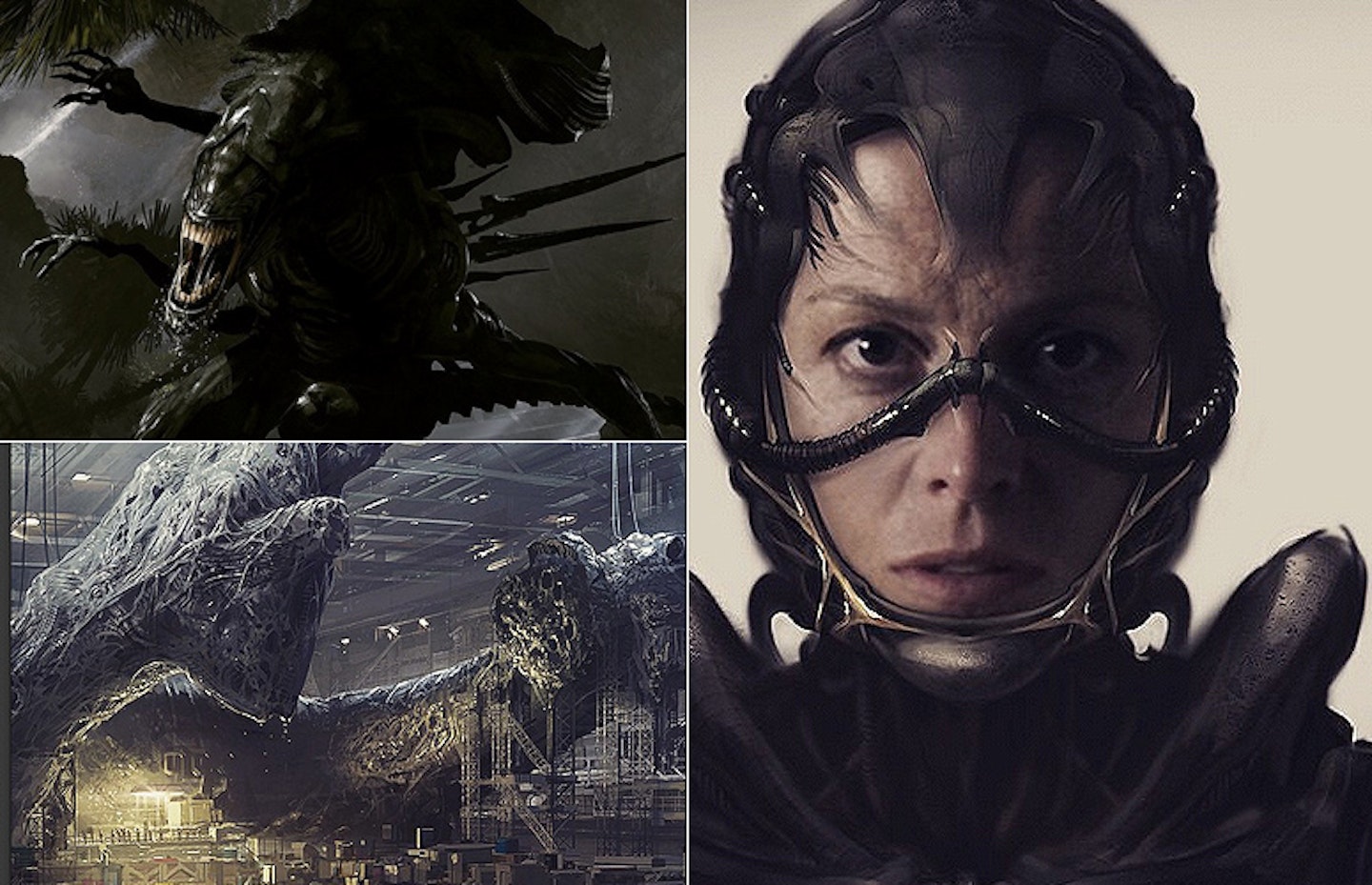
An intriguing addition to the Alien³ lore, sci-fi maven Neill Blomkamp’s recently Instagrammed revelation that he’s worked on his own Alien sequel comes with concept art illustrating what it might have looked like. The answer? As faithful to the spirit of H.R. Giger as you’d expect from a hardcore devotee of the franchise, and as full of tweaks, modifications and fresh hardwear as you’d expect from the man who gave us District 9 and its arsenal of prawn-quelling weaponry. Blomkamp’s now-abandoned version for 20th Century Fox seems to retcon the franchise, effectively picking up several years after Aliens and forking away from the events of the existing Alien³. The fan-thrilling artwork shows Ripley and Hicks reteaming for more shooty-‘splodey hell with more consciously contemporary undertones – note Ripley’s suicide bomber garb – and an emphasis on biotech. One of the Space Jockey donut ships has been commandeered and positioned in a space hangar that would, presumably, rather it was parked somewhere else. It’s a bold, original vision that rather has us wishing he’d been around when all of the above was still going on. He’d have been nine at the time, of course, but still...
